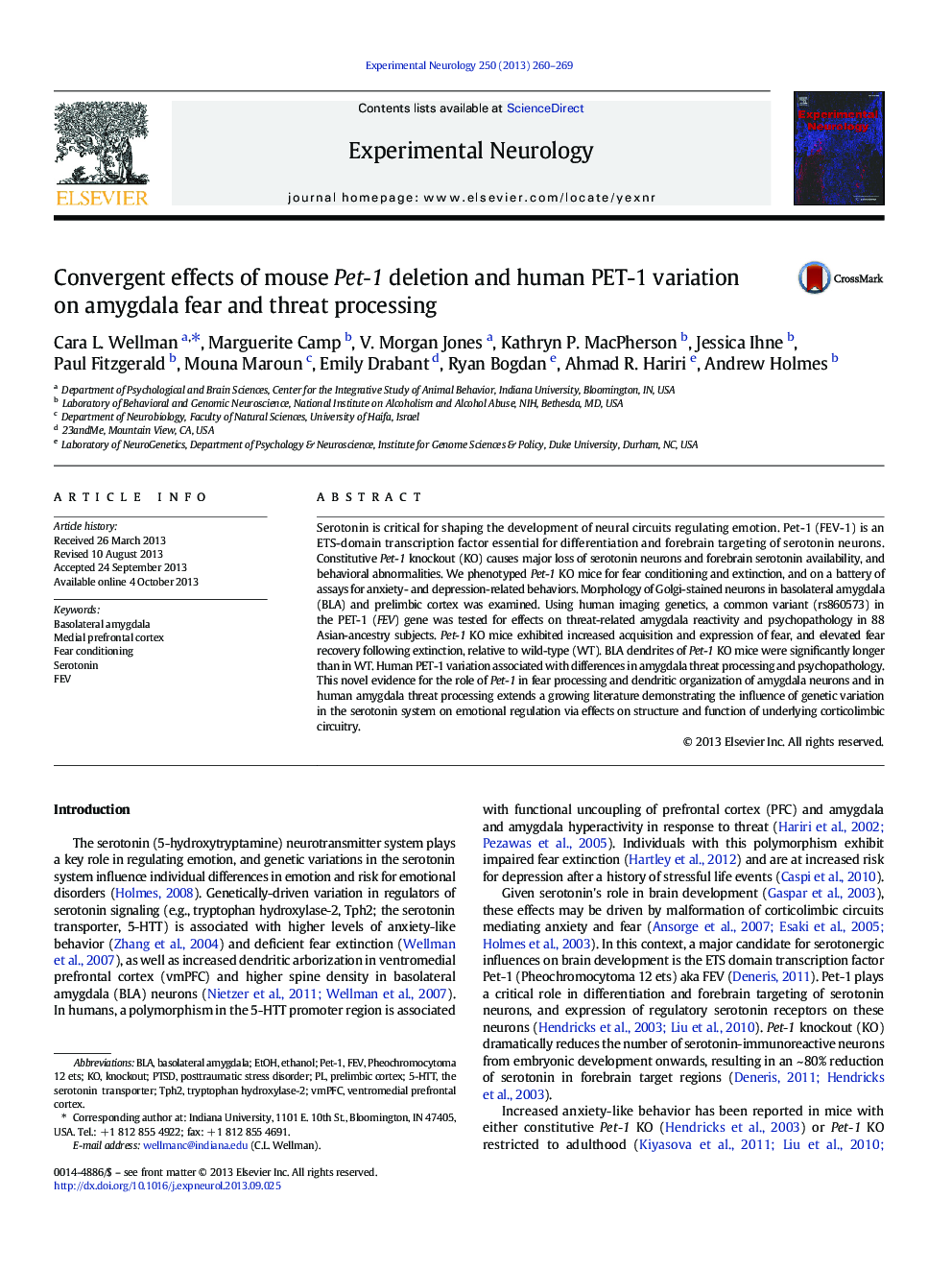| Article ID | Journal | Published Year | Pages | File Type |
|---|---|---|---|---|
| 6017944 | Experimental Neurology | 2013 | 10 Pages |
Abstract
Serotonin is critical for shaping the development of neural circuits regulating emotion. Pet-1 (FEV-1) is an ETS-domain transcription factor essential for differentiation and forebrain targeting of serotonin neurons. Constitutive Pet-1 knockout (KO) causes major loss of serotonin neurons and forebrain serotonin availability, and behavioral abnormalities. We phenotyped Pet-1 KO mice for fear conditioning and extinction, and on a battery of assays for anxiety- and depression-related behaviors. Morphology of Golgi-stained neurons in basolateral amygdala (BLA) and prelimbic cortex was examined. Using human imaging genetics, a common variant (rs860573) in the PET-1 (FEV) gene was tested for effects on threat-related amygdala reactivity and psychopathology in 88 Asian-ancestry subjects. Pet-1 KO mice exhibited increased acquisition and expression of fear, and elevated fear recovery following extinction, relative to wild-type (WT). BLA dendrites of Pet-1 KO mice were significantly longer than in WT. Human PET-1 variation associated with differences in amygdala threat processing and psychopathology. This novel evidence for the role of Pet-1 in fear processing and dendritic organization of amygdala neurons and in human amygdala threat processing extends a growing literature demonstrating the influence of genetic variation in the serotonin system on emotional regulation via effects on structure and function of underlying corticolimbic circuitry.
Keywords
Related Topics
Life Sciences
Neuroscience
Neurology
Authors
Cara L. Wellman, Marguerite Camp, V. Morgan Jones, Kathryn P. MacPherson, Jessica Ihne, Paul Fitzgerald, Mouna Maroun, Emily Drabant, Ryan Bogdan, Ahmad R. Hariri, Andrew Holmes,
